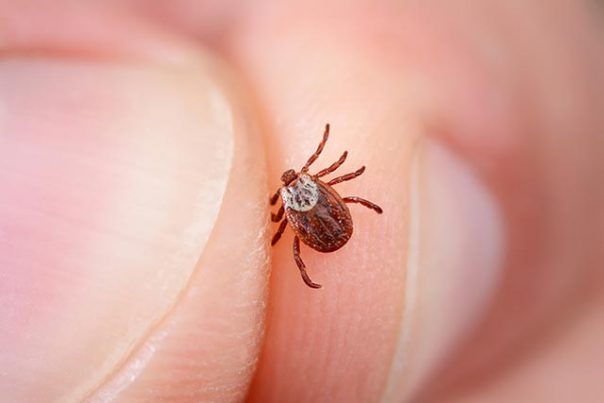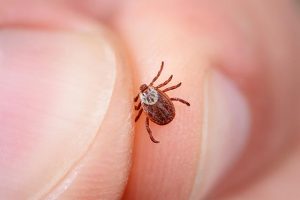
Rickettsialpox – causes, side effects and treatments at NaturalPedia.com
Tuesday, August 07, 2018 by Ralph Flores
http://www.naturalpedia.com/rickettsialpox-causes-side-effects-and-treatments-at-naturalpedia-com.html

Rickettsialpox is a rickettsial infection caused by Rickettsia akari. The bacteria, which are usually found in mice, are transmitted to people when they are exposed to mites that have previously inoculated infected mice.
The disease is commonly found in the U.S., as well as in Russia, Korea, and Africa.
Rickettsialpox has mild symptoms. These may range from flu-like symptoms to a widespread rash. In some cases, the lymph glands may also be affected.
The condition is self-limiting, for the most part. To prevent rickettsialpox, regulation of mice population in the community is necessary to kill infected mites.

Known risk factors and symptoms of rickettsialpox
The disease has no predisposition – anyone bitten by an infected mite is likely to get rickettsialpox. However, people in workplaces or homes that have rodents are more likely to be infected. In particular, the mouse mite (Liponyssoides sanguineus) is the main transmitter of the infection to humans. The mites have a similar feeding pattern to those of ticks, only mites do not attach and feed for prolonged periods. This makes it hard for people to recall if they have been bitten once they are sick.
Rickettsialpox begins as a painless, firm, red lump (nodule) at the site where the person was bitten. Over time, the nodule becomes filled with fluid that bursts and crusts over. The resulting sore can be up to an inch (2.5 cm) wide.
The incubation period for rickettsialpox is between six to 15 days, after which the following symptoms will appear.
- Photophobia (discomfort in bright light)
- Fever and chills
- Muscle pain
- A widespread rash that looks like chickenpox
- Sweating
The rash, while it is widespread, is not painful and will clear after a week.
Body systems affected by rickettsialpox
The disease can affect most parts of the body, but no complications are linked to rickettsialpox.
Food items or nutrients that may prevent rickettsialpox
Currently, no food items are available that may prevent or relieve rickettsialpox.
Treatments, management options for rickettsialpox
Rickettsialpox is a self-limited disease, and symptoms usually clear out after five to seven days. However, healthcare professionals recommend the oral administration of doxycycline to speed up recovery.
Like ticks, mites are tiny creatures that can be hard to spot. Here are some recommended measures to prevent small insect bites.
- Wear dark, well-fitted clothing. A study has shown that dark-colored clothing attracted fewer insects than light-colored ones. A full-sleeved, ankle-length outfit would do. Wear close-fitted socks to keep the insects from crawling underneath, and protect your head with a scarf to make sure they don’t latch onto the scalp.
- Use coconut oil for a natural, non-toxic repellent. Apply it on exposed body parts and let it settle on the skin to prevent the transmission of diseases.
- Take care of your pets. Ticks, fleas, and mites can easily attach themselves to animal skin, where they hide behind the fur. Grab them with fine tweezers and slowly pull them out. Other methods include setting up pest-repellent herbs in their habitats to discourage infestation.
Where to learn more
- Effective alternative treatments for Lyme disease and protection from tick bites
- Fermented red Asian ginseng a great natural remedy for allergy symptoms
- 10 Extraordinary Uses Of Tea Tree Oil
- Freeze! This home remedy could get rid of your headaches
- These nontoxic remedies kill fleas and ticks without harming your pet
Summary
Rickettsialpox is an infection caused by Rickettsia akari.
Rickettsia akari, which is usually found in mice, is transmitted to people when they are exposed to mites from infected animals.
Rickettsialpox begins as a painless, firm, red lump at the site where the person was bitten.
The incubation period for rickettsialpox is between six to 15 days.
The disease can affect most parts of the body, but no complications are linked to rickettsialpox.
To prevent rickettsialpox, regulation of mice population in the community is necessary to kill infected mites.
Sources include:
Tagged Under: Tags: Rickettsialpox





